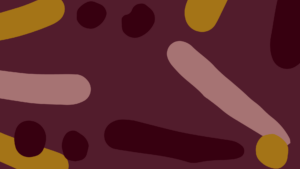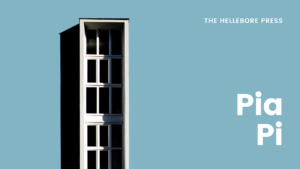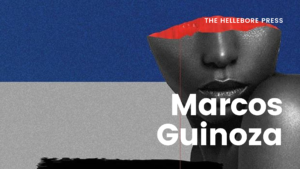Music can be described as a layered process of melodies and instruments that mesh together to form a song. The genres range from folk, hip hop, metal, to lo-fi surf rock, neo-soul, and beyond. Each of these genres contribute to the scene ultimately defining a generation of riot grrls, punks, or oldheads. The roots of music can be political and/or cultural—leaning into our identities and philosophies as both individuals and communites. But how else can listeners appreciate the music for its artistic and entertainment value?
Through,
Lyrics as Poetry
of course!
How has your background influenced your desire to create a publication for songwriters and prose writers?
Sara: Lyric booklets have always been scattered throughout my apartments. Reading the lyrics of an album I admire, separated from the music, allows me to appreciate the creativity it takes to turn those words into music. As a songwriter, lyrics are the foundation and so much time and heart can be spent writing them. I wanted to create a book that I’d want to read.
When I first lived in New York, I worked at an intimate venue called City Winery. Night after night, I would listen closely to many great songwriters and their words. That helped form my taste in music, helped me find my voice as a songwriter.
Describe the process of writing a song. How are poetic elements inextricably linked to songwriting? In what ways are both arts forms dependent on one another?
Sara: Lyrics can be read on their own like a poem, and interpreted separate from the music. In that way, at the very least, they are linked. For my songwriting process, I like to look back at poems or my own notes and pick out lines or concepts. Then I’ll take some of those lines and sit down at the keyboard and just play and sing those lines, and improvise off them and see if anything sticks. So much time can be spent finding that perfect word or phrase — or words may just end up tumbling out from somewhere deep in my subconscious.
What is it a about Los Angeles that fuels creativity and freedom of expression? Have these surroundings influenced your craft?
Sara: An L.A. Times columnist wrote recently, “L.A. doesn’t have seasons, it has moods.” There’s so much diversity of creative thought within this expansive city. And there are so many beautiful places within a short driving distance which helps me get out of my head. And the beautiful light here.
What artists, writers, and or songwriters speak to you? In what ways have they contributed to your artistic narrative?
Sara: Just to name a few: Cat Power, Hope Sandoval, Joni Mitchell, John Lennon. I love the simplicity in their songwriting, the vulnerable tone in their voices, how they can make accessible, relatable themes unique to their own voice and deliver it in such a creative way. I draw a lot of inspiration from writers and poets as well: Joan Didion, Edward Abbey, Sandra Hochman, Mark Strand, Pablo Neruda, Mary Oliver, to name a few.
Are there any other modes of expression that inspire your songwriting? How so?
Sara: Creating and curating this journal has allowed me to learn about so many different artists. The process of working with Justin has been a great learning in the art of graphic design as well, incorporating all the elements of design, paper and printing is an art form in itself.
Erik, what inspired you to participate in Sara’s vision for Lyrics as Poetry? How did you collaborate together to see the vision through?
Erik: We both love reading in print, browsing stores and finding new music-themed publications, books and zines. The idea for Lyrics as Poetry first came up in the Summer of 2015, before we had that title, as a way to browse through song lyrics and sit with them as we would on a Sunday morning with a newspaper section.
What is your area of expertise? Has it shaped your involvement with Lyrics as Poetry? In what ways?
Erik: My background is in journalism and recent work has been as a news editor. When Sara and I first started creating Lyrics as Poetry, we brainstormed several ideas for how a print literary journal featuring song lyrics could look — from the presentation to layout, theme and what type of features and contributors we’d like to include. Reading and working with writers (there are 20 prose contributors in Vol. 2 and 10 in Vol. 1) has been a great process.
Lyrics as Poetry features minimal, simple, crisp, and yet refined design. How does this approach center the work of songwriters and prose writers?
Justin: The simplicity of the design allows the structure of the page to step aside so that the reader can focus on the words. We wanted the design to set an elegant tone, hold up the text, then step aside and allow the shapes of the lyrics to do their thing. We really wanted to quietly celebrate the texts with this book and the simplicity of the design naturally helps to do that.
When developing the design, do you let the work lead your direction, or do you start off with a plan and go from there?
Justin: Sara had some ideas when she first approached me with the project. She knew what world she wanted to the books to come from so we were able to build from there. We spent some time developing our pallet of fonts, type styles, and general look and feel, then once we liked how all the pieces worked together, we started working with selections of lyrics to let the lengths and shapes of the texts help fine tune the design.
What publications do you read? What is it about these publications that resonate with you?
Sara & Erik: Desert Oracle is one of our favorite small-press journals. California Sunday is a gem, with great photography and design sensibility and also some of the best longform journalism around. Cereal’s simple and beautiful aesthetic is a design influence. We subscribe to The Los Angeles Times daily and New York Times on Sundays. They both feature many stories that we’d never find ourselves clicking on online, but are important and engrossing reads that matter and sometimes make more sense in print. And The New Yorker, it’s the best.
What are your hopes for the future of publishing? How have you sought to contribute to that change?
Sara & Erik: We’ve exhibited at art book fairs and zine fests over the last couple months — it has been a great community to be a part of — so many burgeoning small-presses, which is encouraging. We hope this book is something that someone can put on their music stand or coffee table, and pick up when they need some inspiration. I think there’s a craving for something that can be kept and doesn’t disappear.
Any recommended listening? Or albums/songs/ artists?
Cat Power’s You are Free
Mazzy Star’s So Tonight That I Might See
Beth Orton’s Daybreaker
Iron & Wine’s Shepherd’s Dog
Joni Mitchell’s Blue
Neil Young’s Harvest
John Lennon’s Walls and Bridges
Nick Drake’s Pink Moon
Conor Oberst’s self titled album
Modest Mouse’s The Moon and Antarctica
Alice Coltrane’s Journey in Satchidananda
When selecting and curating content for the Lyrics as Poetry Volumes, what do you look for?
Sara & Erik: We start by creating a loose theme for each volume, then look for lyrics that fit that theme. The songwriters are an eclectic set, emerging and established artists that span multiple genres. Every artist grants us their permission to print their lyrics. It’s great seeing all the different artists in the mix and how they all play off of each other.
Also each song must be a recorded work. We hope the journal also serves as a way to find and discover some new artists or get reacquainted with some you may know. Finding an artist by reading their lyrics first and then listening to the song is a great way to learn about some songwriters that you may not have found otherwise and can make the listening experience that much more personal and special.
The current climate of publishing in the arts, music, and literary world is concerning. Especially when we consider pathways towards inclusion and equity. How do you hope to establish trust and confidence in those who seek to be part of the field/industry? What problems and issues have you hoped to address through Lyrics and Poetry?
Reading each Lyrics as Poetry volume is far more interesting having so many voices represented (62 total contributors for Vol. 1 and 57 for Vol. 2). Songwriters who are featured don’t need to have reached a certain threshold on Spotify or iTunes charts but just have compelling lyrics to share. Writers who pitch a track spotlight aren’t just full-time journalists, but people who have an interesting and personal take on a song lyric.
To listen to the albums recommended by Lyrics as Poetry, check out the playlist below! And stay tuned for the release of Lyrics as Poetry Vol. 3 which is due in the summer!
Lyrics as Poetry is a new print-only journal spotlighting the work of singer-songwriters, where lyrics can be appreciated on their own, as art on the printed page, along with personal notes from artists and journalists.


